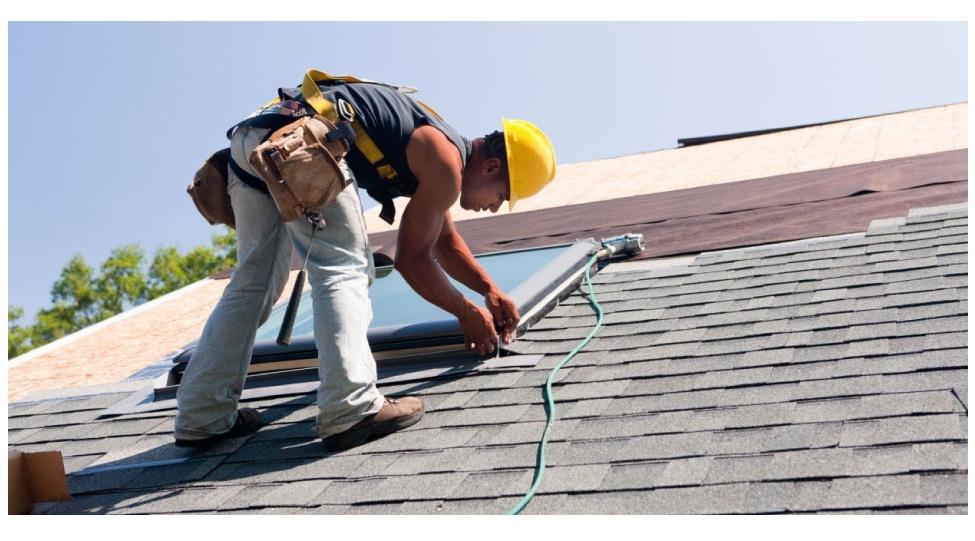Choose a certified Roofer to ensure durable roofing solutions.
Choose a certified Roofer to ensure durable roofing solutions.
Blog Article
Exactly How to Examine Different Roof Options for Your Structure Needs
Reviewing roofing choices for your building needs a detailed technique that takes into consideration numerous variables such as the intended usage of the structure, local climate problems, and material features. It is vital to evaluate the advantages and drawbacks of various roof kinds, from asphalt shingles to steel and clay floor tiles, while additionally considering first expenses and long-term maintenance. Additionally, recognizing energy efficiency and visual allure can affect your choice. As you consider these considerations, one question continues to be: which factors will eventually direct your option for a sustainable and visually pleasing roofing service?
Assessing Your Structure's Demands
To effectively examine roof alternatives, begin by completely evaluating your structure's demands. Beginning by thinking about the building's planned use, as different frameworks may demand varying roof specifications. For example, residential roof coverings usually prioritize looks and insulation, while commercial buildings might focus on sturdiness and load-bearing capacity.
Next, evaluate the local climate conditions that will certainly affect roof covering efficiency. Elements such as temperature level changes, precipitation levels, and wind patterns can influence material option and design. A roof system that masters a warm climate might not carry out as well in locations vulnerable to hefty snowfall or severe warmth.
Additionally, assess the architectural honesty of your structure. Guarantee that the existing structure can sustain the selected roof covering products, particularly if thinking about heavier alternatives. It is also crucial to review any local building codes or laws that may determine specific requirements for roof.

Contrasting Roof Covering Products
As soon as an extensive assessment of your structure's needs has been finished, the next action entails comparing different roof covering materials. Each material supplies distinct benefits and disadvantages, making it vital to straighten your option with your particular needs and situations.
Asphalt shingles are commonly identified for their affordability and simplicity of installment, making them a prominent alternative for household buildings. On the various other hand, steel roof covering, known for its toughness and longevity, can withstand rough weather but might come with a higher initial financial investment.
Clay and concrete floor tiles give superb thermal insulation and aesthetic appeal, particularly for Mediterranean-style architecture, yet they require an even more robust architectural support as a result of their weight. Timber shakes offer a natural appearance and great insulation properties yet might require more maintenance and are at risk to fire threats.
Reviewing Cost and Budget
Examining your roofing alternatives demands a mindful examination of cost and budget considerations. The total budget plan for a roof job comprises numerous elements, including product expenses, labor expenses, upkeep, and prospective long-term financial savings. It is necessary to establish a clear budget before discovering specific roof covering products, as this will view it now guide the decision-making procedure and help you avoid overspending.
Begin by getting quotes from multiple professionals to recognize labor prices in your area. Make certain that these estimates include all needed solutions, such as removal of the old roof, setup, and any extra functions, like insulation or air flow enhancements - Perrysburg Roofer. Next off, assess the price of different roof products, thinking about both preliminary setup expenses and expected life expectancy

Recognizing Power Effectiveness
Power efficiency plays a crucial duty in the selection of roofing materials and systems, significantly impacting both power usage and general convenience within a building. An appropriate roof can improve thermal efficiency, minimizing the demand for heating and cooling down systems, which in turn lowers power costs check my reference and minimizes environmental effect.
When assessing roofing options, take into consideration products that reflect rather than absorb heat. Furthermore, appropriate insulation and air flow are essential to optimize the power efficiency of the entire roofing system.
Another essential factor is the roof covering system's long life and upkeep requirements. Sturdy materials that need less constant substitute add to long-term energy savings. The power effectiveness of a roof system can also be evaluated through its conformity with recognized sustainability rankings such as ENERGY STAR or LEED.
Thinking About Visual Appeal
A roofing's aesthetic appeal substantially influences the general look of a pop over to this web-site building, matching its architectural design and improving aesthetic allure. Sylvania Roofing Contractor. When evaluating roof choices, it is vital to think about exactly how the chosen product, shade, and layout will balance with the existing framework and area. A properly designed roof covering can boost also the easiest of buildings, changing them into visual focal factors
Different roofing materials provide various aesthetic qualities. Typical shingles may evoke a timeless appeal, while metal roofing can present a contemporary, smooth appearance. Additionally, the shade of the roof covering product plays an important role; lighter tones can make a building appear more sizable, while darker tones might develop a cozier setting.
Additionally, building components, such as dormers and eaves, can boost the roof covering's visual effect. It is recommended to seek advice from expert designers or engineers to make certain the chosen roof covering choice aligns with the general design intent. Inevitably, a roof must not just provide functional advantages but additionally add favorably to the structure's visual, reflecting the owner's preference and the personality of the surrounding atmosphere.
Final thought

Report this page